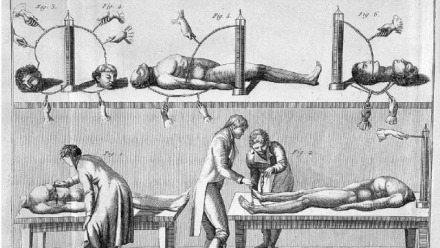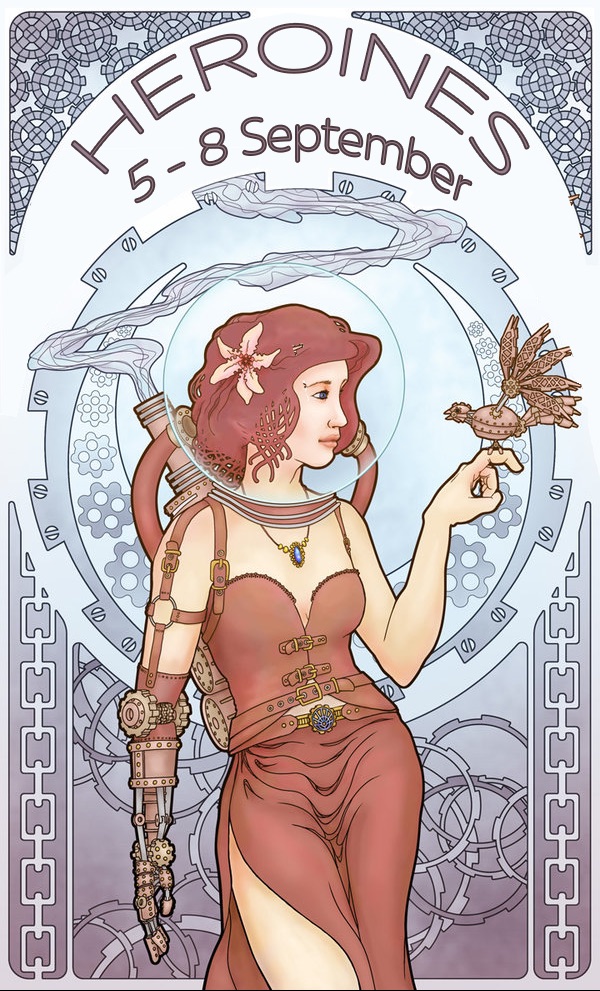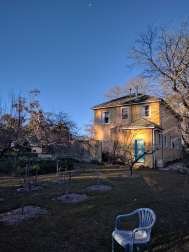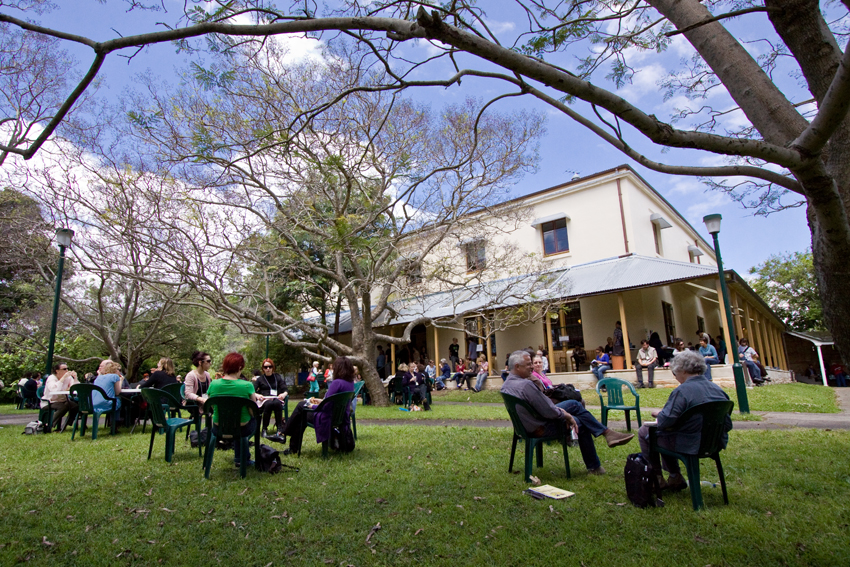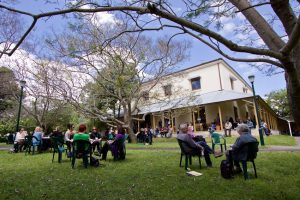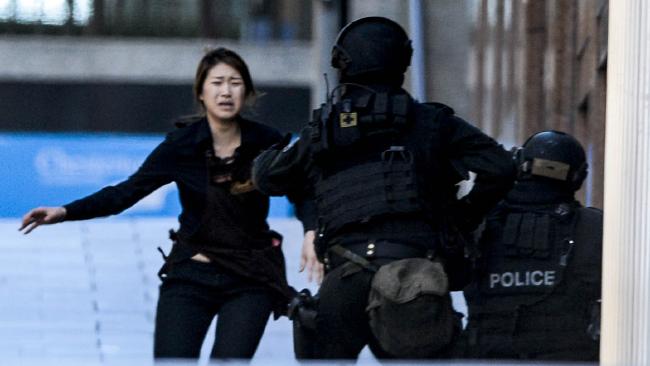So looking forward to attending this conference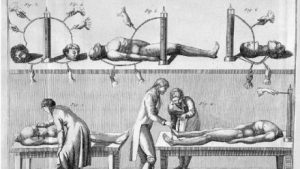 and presenting my paper on Peter Carey’s short story The Chance and the way it rewrites, echoes and riffs on Frankenstein.
and presenting my paper on Peter Carey’s short story The Chance and the way it rewrites, echoes and riffs on Frankenstein.
Heroines Festival, Saturday 8th September
Looking forward to being part of the Heroines literary festival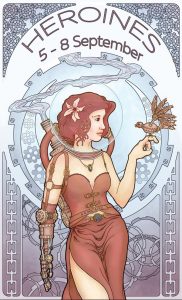 at Thirroul on what I’m sure will be a gorgeous spring day. My panel FUTURE PERFECT is on at 2:15pm and there will be book signing. Would love to see you there. Also, there is an early bird discount till August 8th.
at Thirroul on what I’m sure will be a gorgeous spring day. My panel FUTURE PERFECT is on at 2:15pm and there will be book signing. Would love to see you there. Also, there is an early bird discount till August 8th.
Focus on the Novel 2018 – Varuna Focus Week Booked Out!
I am so excited to be teaching this residential retreat for a week at Varuna focusing on reading and writing the novel. This year’s week is booked out.
Mermaids, Maritime Folklore and Modernity
Very excited about presenting my paper on mermaids to this conference in Copenhagen .
.
Journalling for Creativity and Productivity – One day course 14 October
Very much looking forward to teaching this one day course at the NSW Writers Centre – will be so much fun.
When: Saturday 14 October, 10am-4pm
Cost: Full Price: $180; Member: $125; Conc Member: $110
Level: All levels and types of writer will benefit, including academic writers and journalists
In this energising, fun and interactive course, you’ll learn how to create a daily journal for capturing ideas, enhancing productivity, and prioritising tasks. The aim is to reduce stress while increasing focus, organisation and playfulness. The course blends approaches from a number of sources on productivity and incorporates insights from brain research to harness what we know about motivation and concentration. The resulting approach is endlessly customisable. You can spend as little as five minutes a day on it. It is, in essence, a practical approach to mindfulness, with a focus on calm, creativity and clarifying priorities.
The day will include exercises, supporting information, tips, techniques, and pointers on where and how to find more information after the course has finished. The journal you end up with will give you an overview of your life, a forward-looking tool to generate ideas and complete projects, but also a review tool for learning lessons, and a record of your journey, as colourful and detailed as you want it to be.
Expected Learning Outcomes
How to begin: how to set up a daily journal to capture ideas, enrich creativity and prioritise tasks
How to continue: an understanding of how to use a range of journal techniques to achieve large goals such as writing a novel or finishing a degree
How to take it further: understanding how and why an analogue journal complements digital tools and how to progress beyond the exercises and techniques offered during the course to continue learning and customising your journal.
Participant Requirements
You will need to bring a blank journal, preferably about A5 size, no dates or days. The pages can be blank or lined but dotted is generally best (this will be explained on the day). You will also need to bring a pen or three (preferably at least black, blue and red) and a ruler. Coloured highlighter markers are very useful.
The journal can be as basic or as fancy as you wish: many consider the Leuchtturm 1917 Bullet Journal to be the ultimate journal, or the Moleskine. These journals are beautiful, useful, and the perfect size but they are not cheap so do feel free to bring along whatever journal is best for you. This is a tool you will use every day for it to be effective, so if possible choose one that delights you without inhibiting your creativity.
Armed and Dangerous – The Australian
My review of three books on Special Operations in The Australian and the implications for further militarisation of our police forces.
‘I am a sucker for boot-camp training stories in all their heartbreak, bastardry and triumph. The first half of Stanley Kubrick’s movie Full Metal Jacket is almost perfect, only improved by the knowledge that R. Lee Ermey as the senior drill instructor was a real US Marine Corps drill sergeant. The answer to the oft-asked question, were Marine Corps drill instructors really like that? Hell yeah!
That feeling of reality is also what makes these insider stories of men with guns fascinating….’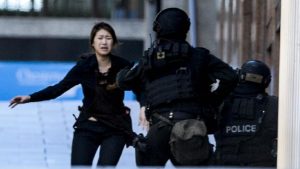
Watch Over Me Audio Book
Watch Over Me is now available as an audio book. Here’s a link to an audio excerpt.
Best Australian Stories 2015
Best Australian Stories 2015 is now available. It’s a cracker this year and I’m thrilled that my (very) short story – my first microfiction – 2 or 3 Things I Know About You is included. And yes, the title is a reference to Jean Luc Godard, though the film director in the story is not Godard. Worth checking out this collection.

The Trillion Pearl Choker
My story The Trillion Pearl Choker has been published in the Elemental edition of Sydney University’s Southerly Journal.
“The Land of Parrots had had it coming for a long time, people said….
As with many seismic changes the rumbles barely registered at first.”
‘Elemental is concerned with our experience of the elements in an era of climate change. The four elements of classical thought (earth, fire, water, air) align with what we now call four states of matter and hence to what is termed the “material turn” in contemporary debates in the humanities. This material turn seeks new ways of understanding the physical world and is motivated by the urgency of shared vulnerability on the planet.
In Australia this experience of extreme weather, including floods and fires, embroils the entire ecosystem including literary ecologies. This issue considers a range of Australian writers who address the modern experience of the elements in their volatility and magnificence, raising questions, recording and responding to the matter as the matter at hand.’
Must Australia Always Be Imaginary?
Must Australia Always Be Imaginary: Cartography as Creation in Peter Carey’s ‘Do You Love Me?’ My first academic journal article, drawn from research for my exegesis, published in the June 2015 edition of Antipodes: A global journal of Australian/NZ literature.


